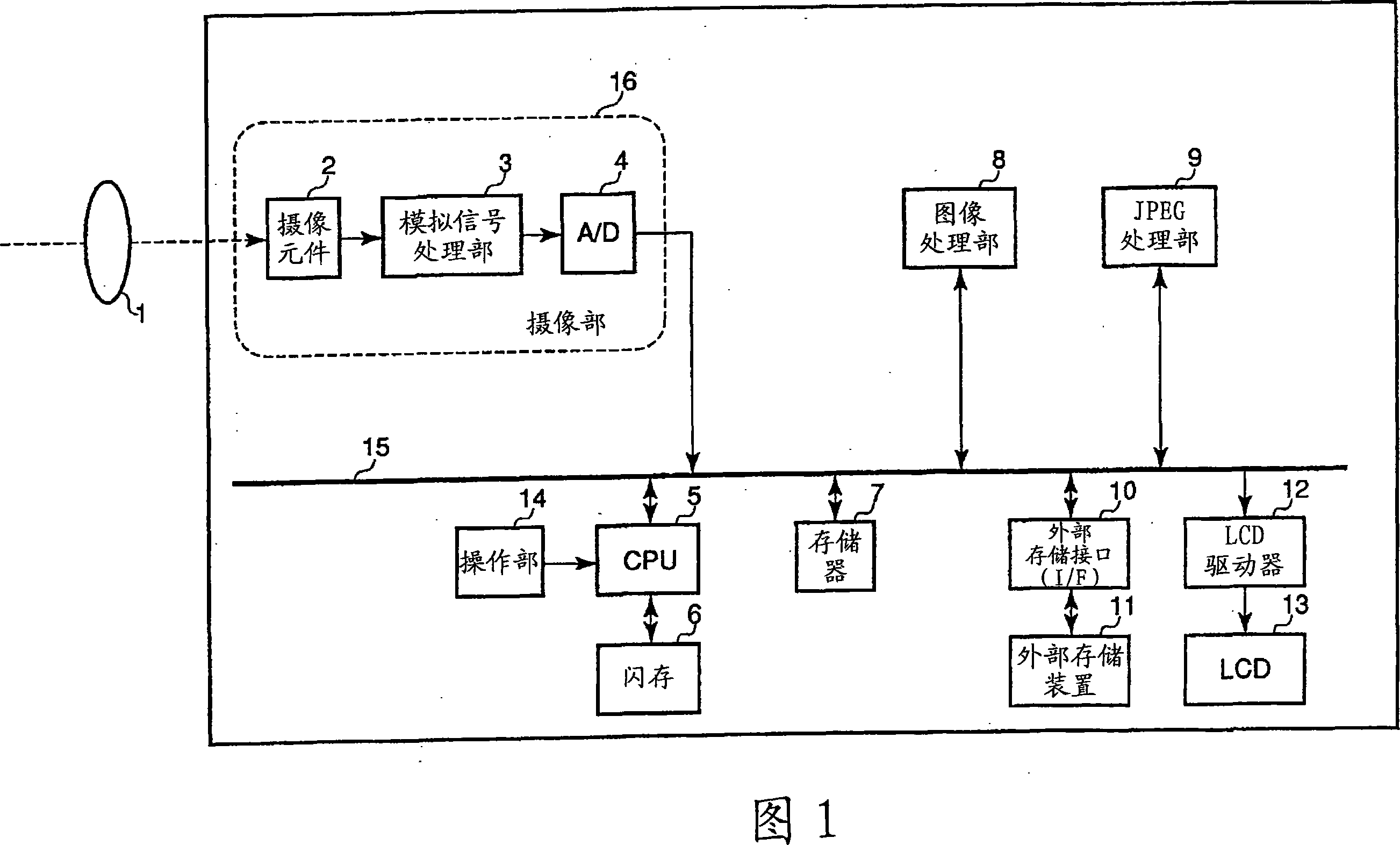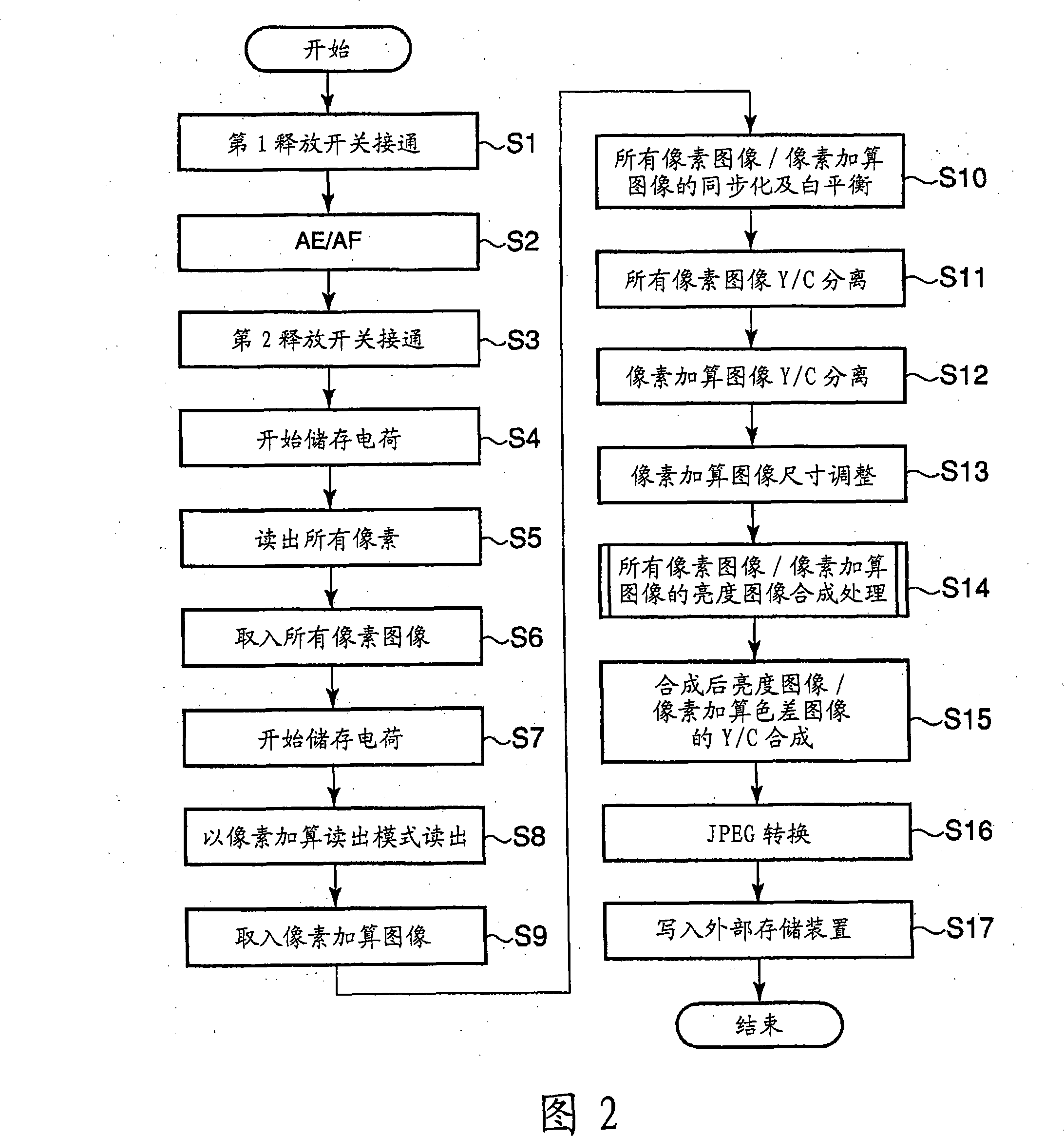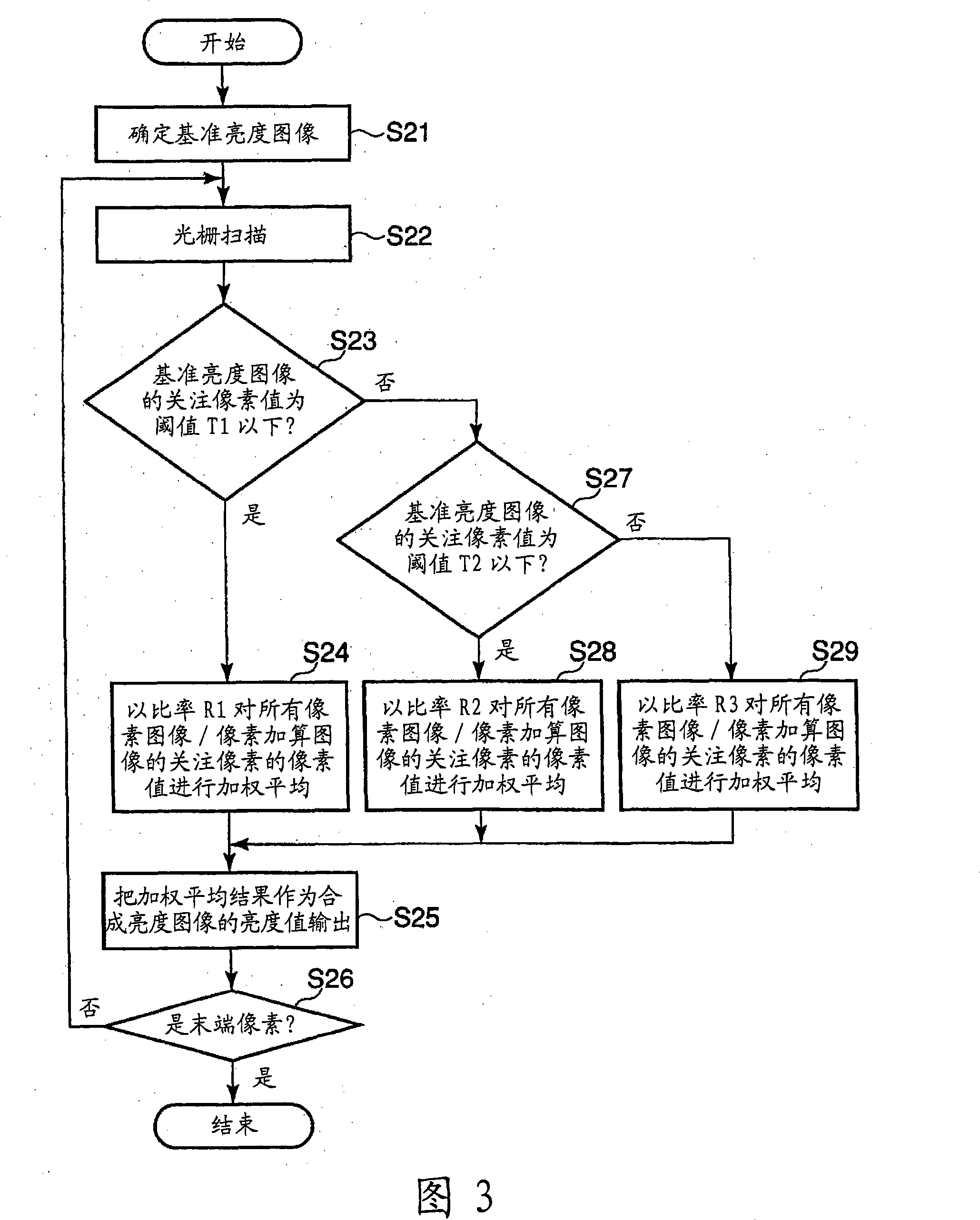Camera and image processing method
A camera device and image processing technology, applied in image communication, brightness and chrominance signal processing circuits, signal generators with a single pick-up device, etc., can solve the problems of image resolution reduction, resolution reduction, image shrinkage, etc. , to achieve the effect of improving noise and suppressing the decline of resolution
- Summary
- Abstract
- Description
- Claims
- Application Information
AI Technical Summary
Problems solved by technology
Method used
Image
Examples
no. 1 Embodiment approach
[0021] FIG. 1 is a block diagram showing the main configuration of the imaging device according to the first embodiment of the present invention. As shown in FIG. 1, the imaging device of this embodiment has a lens 1, an imaging element 2, an analog signal processing unit 3, an A / D conversion unit 4, a CPU 5, a flash memory 6, a memory 7, an image processing unit 8, and a JPEG processing unit 9. , An external storage interface (I / F) 10, an external storage device 11, an LCD driver 12, an LCD 13, an operating unit 14 and a bus 15. In addition, the imaging element 2, the analog signal processing unit 3, and the A / D conversion unit 4 constitute the imaging unit 16.
[0022] The lens 1 condenses light from a subject not shown. The imaging element 2 receives the light converged by the lens 1, converts it into electric charge corresponding to the amount of light received, and outputs the electric charge as an image signal. Here, if the imaging element 2 is an imaging element having an a...
no. 2 Embodiment approach
[0039] Next, the second embodiment of the present invention will be described. 4 is a block diagram showing the main configuration of an imaging device according to a second embodiment of the present invention. Here, the constituent elements assigned the same reference numerals in FIG. 4 as those in FIG. 1 are the same as those in FIG. 1, so the description is omitted. The imaging device shown in FIG. 4 is provided with an optical path branching prism 20. The optical path branching prism 20 branches the light converged by the lens 1 so that one of the branched lights enters the imaging unit 27 and the other light enters the imaging unit 28. According to this structure, the light from the subject can be incident on the two imaging units at the same time.
[0040] That is, the light converged by the lens 1 is divided into two systems by the optical path branching prism 20, and each light is received by the imaging element 21 and the imaging element 22. Here, the imaging element 21 h...
PUM
 Login to View More
Login to View More Abstract
Description
Claims
Application Information
 Login to View More
Login to View More - R&D
- Intellectual Property
- Life Sciences
- Materials
- Tech Scout
- Unparalleled Data Quality
- Higher Quality Content
- 60% Fewer Hallucinations
Browse by: Latest US Patents, China's latest patents, Technical Efficacy Thesaurus, Application Domain, Technology Topic, Popular Technical Reports.
© 2025 PatSnap. All rights reserved.Legal|Privacy policy|Modern Slavery Act Transparency Statement|Sitemap|About US| Contact US: help@patsnap.com



